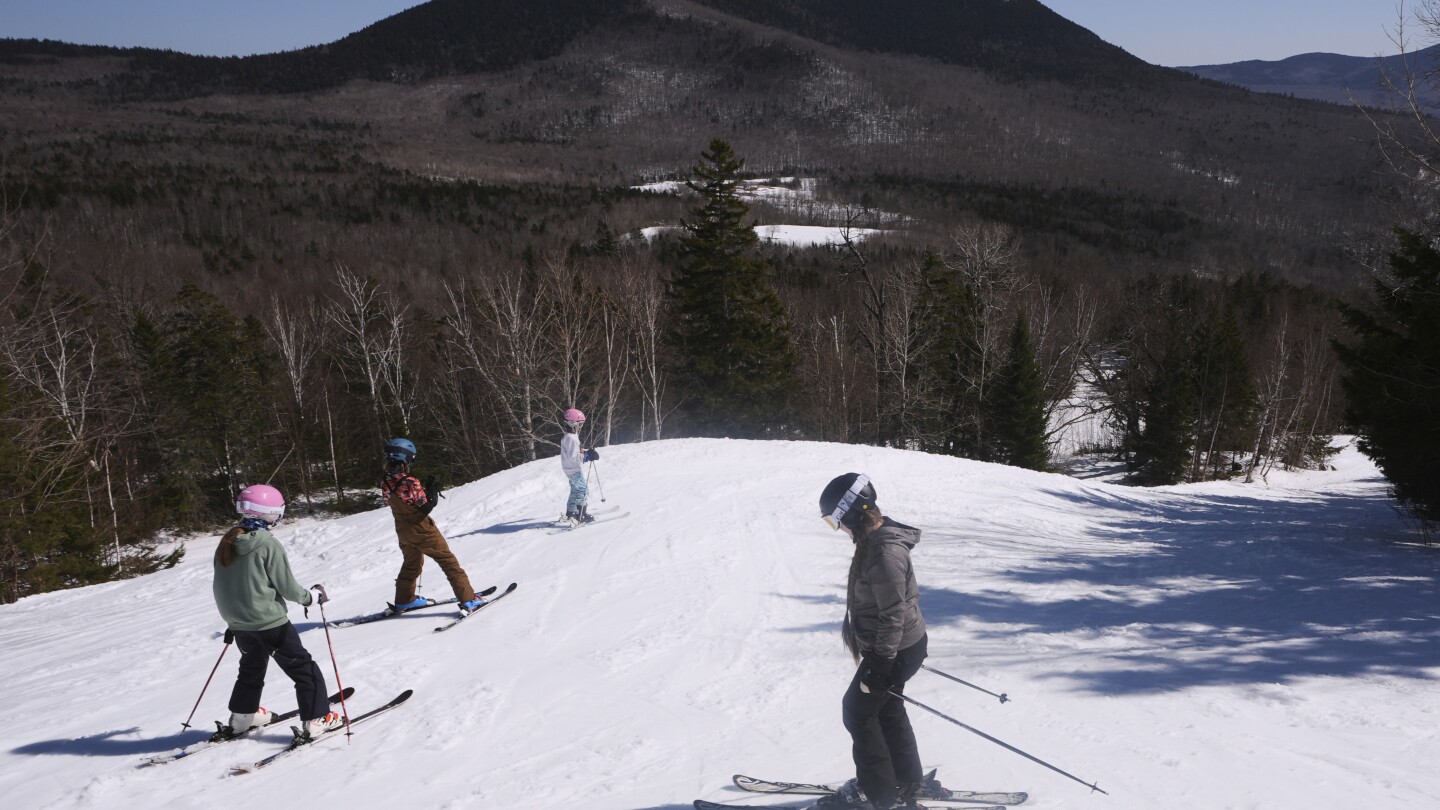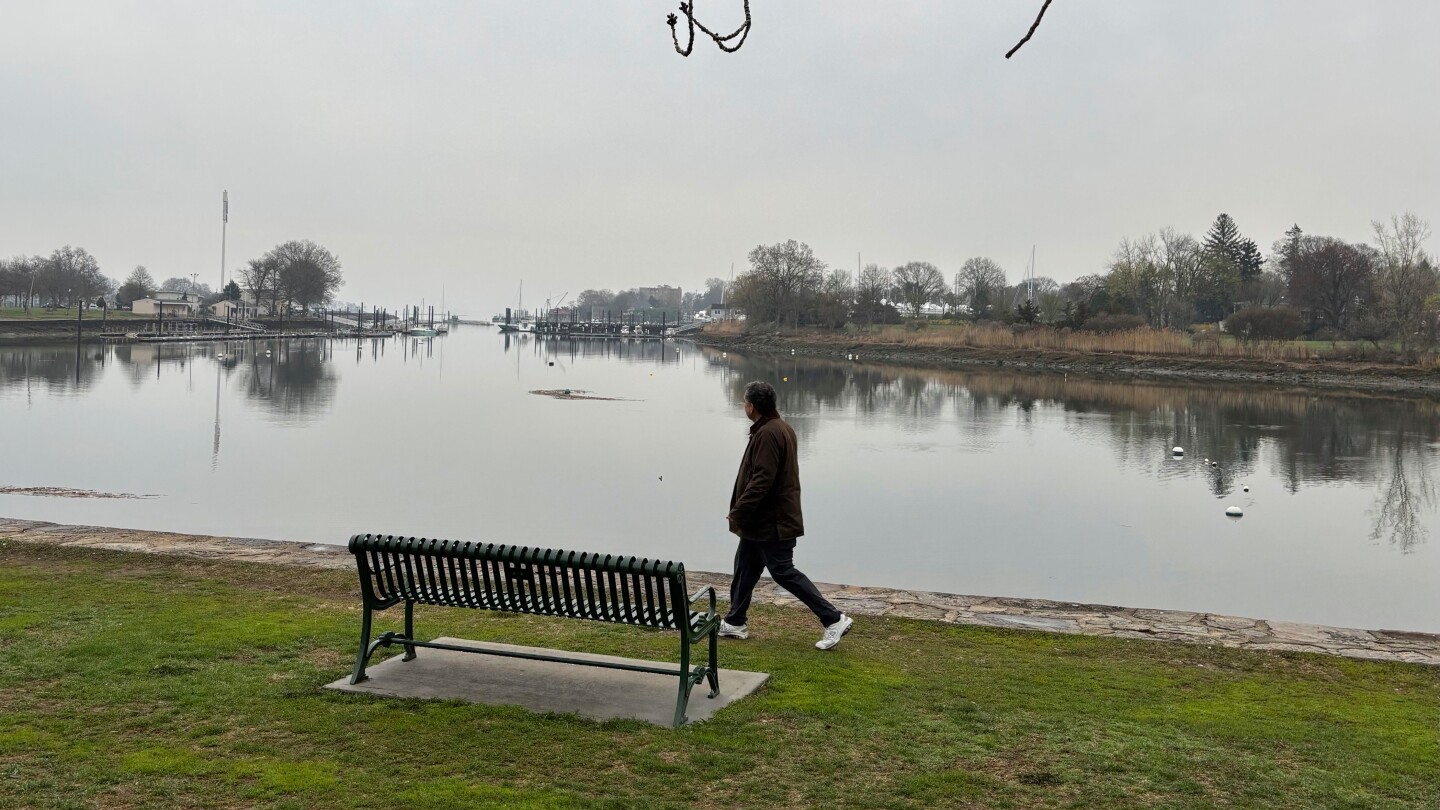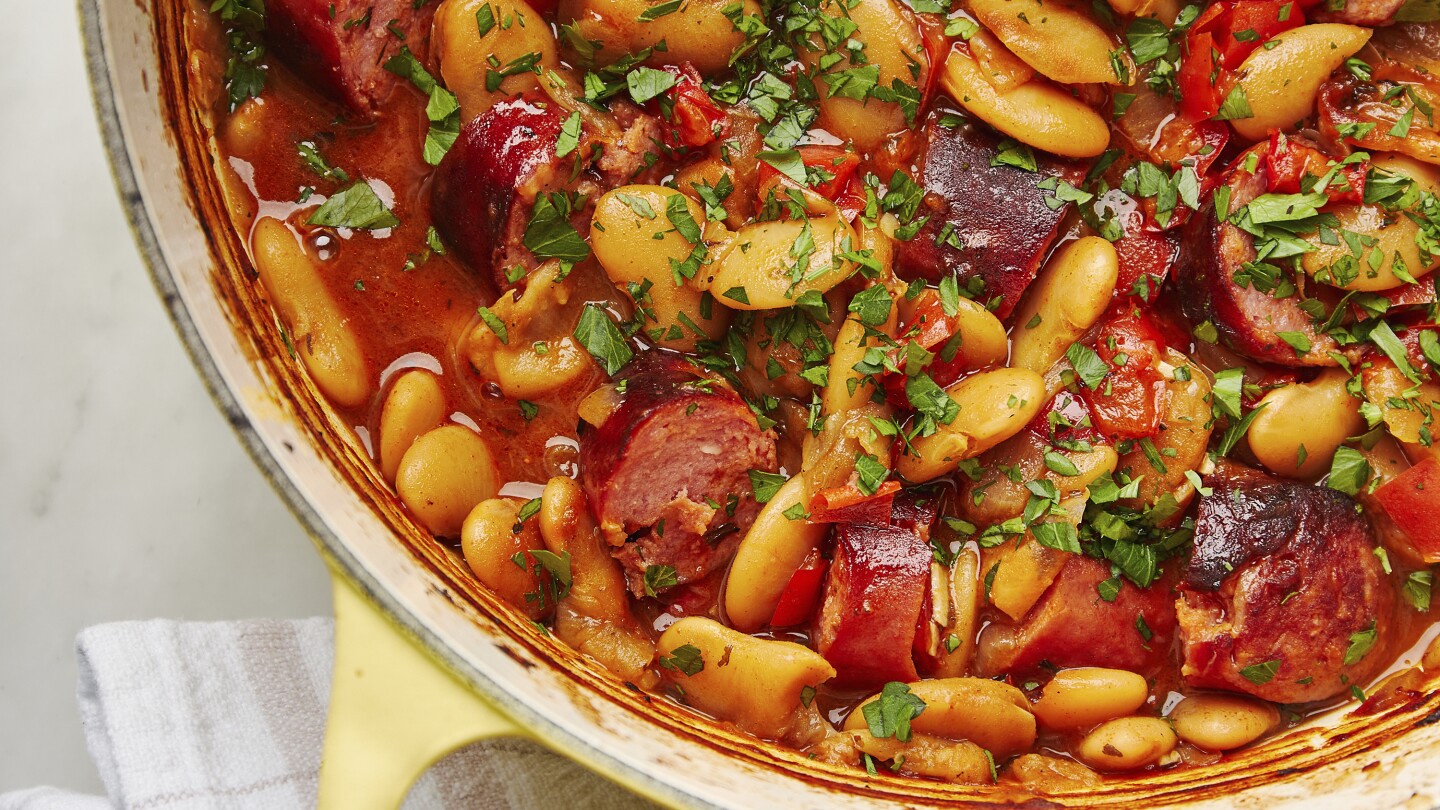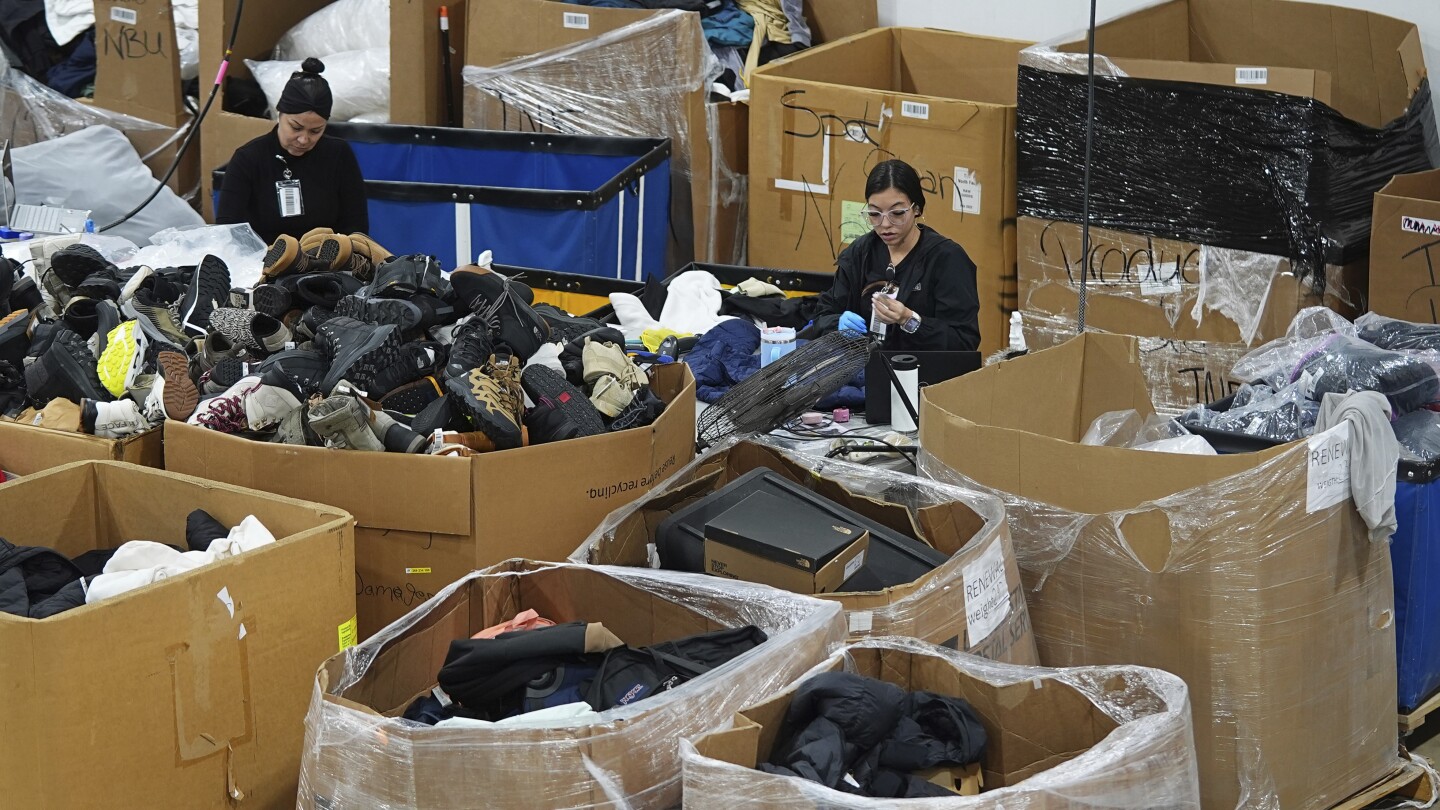Lifestyle
Ski areas adopt technology to transform the sports’ business

JACKSON, N.H. (AP) — A skier since age 4, Thomas Brennick now enjoys regular trips to New Hampshire’s Black Mountain with his two grandchildren.
“It’s back to the old days,” he said from the Summit Double chairlift on a recent sunny Friday. “It’s just good, old-time skiing at its best.”
Behind the scenes, the experience is now propelled by a high-tech system designed to increase efficiency at the state’s oldest ski area. And while small, independent resorts can’t compete on infrastructure or buying power with conglomerates like Vail, which owns nearby Attitash Mountain Resort and seven others in the Northeast alone, at least one entrepreneur is betting technology will be “a really great equalizer.”
That businessman is Erik Mogensen, who bought Black Mountain last year and turned it into a lab for his ski mountain consultancy, Entabeni Systems. The company builds systems that put lift tickets sales, lesson reservations and equipment rentals online while collecting detailed data to inform decisions such as where to make more snow and how much.
“A lot of general managers will go out and look at how many rows of cars are parked, and that’s kind of how they tell how busy they are,” Mogensen said. “We really want to look at that transactional data down to the deepest level.”
That includes analyzing everything from the most popular time to sell hot dogs in the lodge to how many runs a season pass holder makes per visit.
“The large operators, they can do a lot of things at scale that we can’t. They can buy 20 snow cats at a time, 10 chairlifts, those types of things. We can’t do that, but we’re really nimble,” Mogensen said. “We can decide to change the way we groom very quickly, or change the way we open trails, or change our (food and beverage) menu in the middle of a day.”
Transforming a small-time resort
Mogensen, who says his happiest moments are tied to skiing, started Entabeni Systems in 2015, driven by the desire to keep the sport accessible. In 2023, he bought the company Indy Pass, which allows buyers to ski for two days each at 230 independent ski areas, including Black Mountain. It’s an alternative to the Epic and Ikon multi-resort passes offered by the Vail and Alterra conglomerates.
Black Mountain was an early participant in Indy Pass. When Mogensen learned it was in danger of closing, he was reminded of his hometown’s long-gone ski area. He bought Black Mountain aiming to ultimately transform it into a cooperative.
Many Indy Pass resorts also are clients of Entabeni Systems, including Utah’s Beaver Mountain, which bills itself as the longest continuously-run family owned mountain resort in the U.S.
Kristy Seeholzer, whose husband’s grandfather founded Beaver Mountain, said Entabeni streamlined its ticketing and season pass system. That led to new, lower-priced passes for those willing to forgo skiing during holiday weeks or weekends, she said.
“A lot of our season pass holders were self-limiting anyway. They only want to ski weekdays because they don’t want to deal with weekends,” she said. “We could never have kept track of that manually.”
Though she is pleased overall, Seeholzer said the software can be challenging and slow.
“There are some really great programs out there, like on the retail side of things or the sales side of things. And one of the things that was a little frustrating was it felt like we were reinventing the wheel,” she said.
Not everyone is a fan
Sam Shirley, 25, grew up skiing in New Hampshire and worked as a ski instructor and ski school director in Maine while attending college. But he said increasing technology has drastically changed the way he skis, pushing him to switch mostly to cross-country.
“As a customer, it’s made things more complicated,” he said. “It just becomes an extra hassle.”
Shirley used to enjoy spur-of-the-moment trips around New England, but has been put off by ski areas reserving lower rates for those who buy tickets ahead. He doesn’t like having to provide detailed contact information, sometimes even a photograph, just to get a lift ticket.
It’s not just independent ski areas that are focused on technology and data. Many others are using lift tickets and passes embedded with radio frequency identification chips that track skiers’ movements.
Vail resorts pings cell phones to better understand how lift lines are forming, which informs staffing decisions, said John Plack, director of communications. Lift wait times have decreased each year for the past three years, with 97% under 10 minutes this year, he said.
“Our company is a wildly data-driven company. We know a lot about our guest set. We know their tastes. We know what they like to ski, we know when they like to ski. And we’re able to use that data to really improve the guest experience,” he said.
How the big guys battle meager winters
That improvement comes at a cost. A one-day lift ticket at Vail’s Keystone Resort in Colorado sold for $292 last week. A season pass cost $418, a potentially good deal for diehard skiers, but also a reliable revenue stream guaranteeing Vail a certain amount of income even as ski areas face less snow and shorter winters.
The revenue from such passes, especially the multi-resort Epic Pass, allowed the company to invest $100 million in snowmaking, Plack said.
“By committing to the season ahead of time, that gives us certainty and allows us to reinvest in our resorts,” he said.
Mogensen insists bigger isn’t always better, however. Lift tickets at Black Mountain cost $59 to $99 per day and a season’s pass is about $450.
“You don’t just come skiing to turn left and right. You come skiing because of the way the hot chocolate tastes and the way the fire pit smells and what spring skiing is and what the beer tastes like and who you’re around,” he said. “Skiing doesn’t have to be a luxury good. It can be a community center.”
Brennick, the Black Mountain lift rider who was skiing with his grandchildren, said he has noticed a difference since the ski area was sold.
“I can see the change,” he said. “They’re making a lot of snow and it shows.”
___
Ramer reported from Concord, New Hampshire.
Lifestyle
A morning routine can set you on the path to a better day

Starting with brushing his teeth before 4 a.m., influencer Ashton Hall says he also swims, meditates, journals, rubs his face with banana peel, lifts weights, submerges his face in ice water and accomplishes much more every day before breakfast around 9:30.
A video of his morning routine has racked up millions of views on social media, while sparking reactions that range from disbelief to awe. It also jumpstarted the conversation online about how best to start the day, even if a six-hour regimen is ambitious to say the least.
Don’t worry, said Kamalyn Kaur, a psychotherapist in Cheshire, England. You don’t need to start your day with dozens of activities to improve it. But she said it is a good idea to reevaluate how you get going because setting up a relaxed, structured morning will pay dividends for your energy and mood.
“It just sets the tone for the rest of your day,” said Kaur, an anxiety expert who advises new clients to start by reevaluating how they spend the morning. “If you set yourself up and you start your day properly, you start off feeling good, you feel organized.”
The case for establishing a morning routine
This article is part of AP’s Be Well coverage, focusing on wellness, fitness, diet and mental health. Read more Be Well.
As a professor of workplace psychology at The University of Oklahoma, Shawn McClean has spent years studying how work life is influenced by the rest of your life.
He said accomplishing tasks in the same order every morning is helpful because people have limited mental bandwidth before they have to recharge. The brain subconsciously reserves resources for tasks that require higher-level thinking, so routines are a type of mental shortcut.
“We’re cognitive misers,” McClean said. “We don’t like to use our mental energy on things that aren’t important.”
His research has found that employees perform better and are more calm throughout the day when they complete their morning regimen uninterrupted. Conversely, employees with disruptive mornings report higher levels of mental depletion late in the day.
“When it comes to routine disruptions, it throws off your whole day,” he said on a day when he was playing catch-up after having forgotten about his daughter’s show-and-tell. “You get to work and you realize you didn’t brush your teeth.”
What is a “good” morning routine?
Most people already have some kind of routine in place, but few consciously decided on it before it became automatic, McLean said.
It’s hard to define what a good routine is, and there is no formula that is best for everyone.
“It’s going to be idiosyncratic to each person,” McLean said. “It’s what helps them function. Now, can we have destructive routines? Yes.”
Rushing around in the morning to shower, eat and get out the door just on time is an example of a destructive morning routine, Kaur said. The stress of a rushed morning produces extra cortisol, which is a necessary hormone that helps regulate the circadian rhythm, she said. It’s what naturally wakes you up and makes you alert in the morning.
Too much cortisol in the bloodstream, however, creates a feeling of restlessness and anxiety that can be similar to drinking coffee on an empty stomach, Kaur said.
Where should you start?
People who often have hectic mornings should consider setting their alarm 30 minutes earlier — and resist the urge to hit the snooze button, Kaur said. For many people, snoozed sleep is disrupted sleep that might leave you more groggy.
Kaur recommends adding at least two or three quick activities to your morning that have been shown to improve mood — starting with making your bed. Research shows that clutter foments anxiety, and completing a task first thing in the morning promotes the secretion of the feel-good hormone dopamine, she said.
Next, have a glass of water. If you’ve gotten a full night’s sleep, you’ll likely be slightly dehydrated after not consuming liquids for eight hours. And try delaying caffeine until after eating to avoid being jittery.
At some point within the first hour of waking up, expose yourself to natural light, preferably by taking a quick walk, Kaur said. Even if it’s cloudy, daylight is another trigger for the circadian rhythm that promotes alertness first thing in the morning.
“These habits are important,” she said. “It gives you the optimum chance and the optimum conditions to function better throughout the rest of your day.”
EDITOR’S NOTE: Albert Stumm writes about wellness, food and travel. Find his work at https://www.albertstumm.com
Lifestyle
A rustic dish of baked beans and smoked sausages has deep, aromatic flavors

Tavče gravče, which translates as “beans in a pan,” is a Macedonian classic. Traditionally, large dried white beans called tetovac, named for a city in northwestern Macedonia, are the star of the rustic dish, while onions, garlic, peppers and paprika provide deep, rich flavor and color.
In this recipe from our cookbook “ Milk Street 365: The All-Purpose Cookbook for Every Day of the Year,” we opted for the convenience of canned butter beans, which are plump, creamy and the best widely available alternative to tetovac beans. If butter beans are difficult to find, cannellini beans work, too.
Combined with sautéed aromatics and baked for an hour with smoked sausages, the beans turn silky-soft and deeply flavorful. Both kielbasa and bratwurst work well. Optional dried mint adds sweet, woody notes that balance the richer flavors.
Don’t forget to reserve 1½ cups of the bean liquid before draining the cans. The liquid is added to the pot and keeps the beans plump and moist during baking. If the amount of liquid from the cans comes up short, make up the difference with water. To ensure enough liquid evaporates during cooking, use a Dutch oven with a wide diameter, ideally between 11 and 12 inches. Finish with chopped flat leaf parsley and serve with crusty bread on the side.
Baked White Beans and Sausages with Paprika, Onions and Sweet Peppers
Start to finish: 1 hour 50 minutes (20 minutes active)
Servings: 6
Ingredients:
4 tablespoons grapeseed or other neutral oil, divided
2 medium yellow onions, chopped
2 medium red bell peppers, stemmed, seeded and chopped
Kosher salt and ground black pepper
6 medium garlic cloves, thinly sliced
4 teaspoons sweet paprika
1½ teaspoons dried mint (optional)
Three 15½-ounce cans butter beans (1½ cups liquid reserved), rinsed and drained
2 dried árbol chilies OR ¼ teaspoon red pepper flakes
1 to 1¼ pounds smoked sausage, such as kielbasa or bratwurst
¼ cup lightly packed fresh flat-leaf parsley, chopped
Instructions:
Heat the oven to 400°F with a rack in the lower-middle position. In a large Dutch oven over medium-high, heat 3 tablespoons of the oil until shimmering. Add the onions, bell peppers and 1 teaspoon salt; cook, stirring occasionally, until lightly browned, 8 to 10 minutes.
Add the garlic, paprika, mint (if using) and ½ teaspoon pepper; cook, stirring, until fragrant, about 1 minute. Stir in the beans and reserved liquid, árbol chilies and 1½ cups water. Bring to a simmer, stirring occasionally, then nestle the sausages into the pot and drizzle the surface with the remaining 1 tablespoon oil. Transfer to the oven and bake, without stirring, until the sausages are browned and the beans on the surface are slightly crisped, 1 to 1¼ hours.
Remove the pot from the oven and let stand, uncovered, for about 15 minutes; the bean mixture will thicken as it cools. Transfer the sausages to a cutting board. Cut them into pieces, return them to the pot and stir into the beans. Remove and discard the árbol chilies (if used). Taste and season with salt and pepper, then sprinkle with the parsley. Serve from the pot.
EDITOR’S NOTE: For more recipes, go to Christopher Kimball’s Milk Street at 177milkstreet.com/ap
Lifestyle
Tariff-related price increases for new clothes may increase demand for used ones

NEW YORK (AP) — Stores selling secondhand clothes, shoes and accessories are poised to benefit from President Donald Trump’strade war even as businesses the world over race to avert potential damage, according to industry experts.
American styles carry international influence, but nearly all of the clothing sold domestically is made elsewhere. The Yale University Budget Lab last week estimated short-term consumer price increases of 65% for clothes and 87% for leather goods, noting U.S. tariffs “disproportionately affect” those goods.
Such price hikes may drive cost-conscious shoppers to online resale sites, consignment boutiques and thrift stores in search of bargains or a way to turn their wardrobes into cash. Used items cost less than their new equivalents and only would be subject to tariffs if they come from outside the country.
“I think resale is going to grow in a market that is declining,” said Kristen Classi-Zummo, an apparel industry analyst at market research firm Circana. “What I think is going to continue to win in this chaotic environment are channels that bring value.”
The outlook for preowned fashion nevertheless comes with unknowns, including whether the president’s tariffs will stay long enough to pinch consumers and change their behavior. It’s also unclear whether secondhand purveyors will increase their own prices, either to mirror the overall market or in response to shopper demand.
A new audience courtesy of sticker shock
Jan Genovese, a retired fashion executive, sells her unwanted designer clothes through customer-to-customer marketplaces like Mercari. If tariffs cause retail prices to rise, she would consider high-end secondhand sites.
“Until I see it and really have that sticker shock, I can’t say exclusively that I’ll be pushed into another direction,” Genovese, 75, said. “I think that the tariff part of it is that you definitely rethink things. And maybe I will start looking at alternative venues.”
The secondhand clothing market already was flourishing before the specter of tariffs bedeviled the U.S. fashion industry. Management consulting firm McKinsey and Co. predicted after the COVID-19 pandemic that global revenue from preowned fashion would grow 11 times faster than retail apparel sales by this year as shoppers looked to save money or spend it in a more environmentally conscious way.
While millennials and members of Generation Z were known as the primary buyers of used clothing, data from market research firm Sensor Tower shows the audience may be expanding.
The number of mobile app downloads for nine resale marketplaces the firm tracks — eBay, OfferUp, Poshmark, Mercari, Craigslist, Depop, ThredUp, TheRealReal and Vinted — increased by 3% between January and the end of March, the first quarterly gain in three years, Sensor Tower said.
The firm estimates downloads of the apps for eBay, Depop, ThredUp and The RealReal also surged compared to a year earlier for the week of March 31, which was when Trump unveiled since-paused punitive tariffs on dozens of countries.
Circana’s Classi-Zummo said that while customers used to seek out collectible or unusual vintage pieces to supplement their wardrobes, she has noticed more shoppers turning to secondhand sites to replace regular fashion items.
“It’s still a cheaper option” than buying new, even though retailers offer discounts, she said.
A tariff-free gold mine lurking in closets and warehouses
Poshmark, a digital platform where users buy and sell preowned clothing, has yet to see sales pick up under the tariff schedule Trump unveiled but is prepared to capitalize on the moment, CEO Manish Chandra said.
Companies operating e-commerce marketplaces upgrade their technology to make it easier to find items. A visual search tool and other improvements to the Poshmark experience will “pay long dividends in terms of disruption that happens in the market” from the tariffs, Chandra said.
Archive, a San Francisco-based technology company that builds and manages online and in-store resale programs for brands including Dr. Martens, The North Face and Lululemon, has noticed clothing labels expressing more urgency to team up, CEO Emily Gittins said.
“Tapping into all of the inventory that is already sitting in the U.S., either in people’s closets or in warehouses not being used,” offers a revenue source while brands limit or suspend orders from foreign manufacturers, she said.
“There’s a huge amount of uncertainty,” Gittins said. “Everyone believes that this is going to be hugely damaging to consumer goods brands that sell in the U.S. So resale is basically where everyone’s head is going.”
Stock analysts have predicted off-price retailers like TJ Maxx and Burlington Stores will weather tariffs more easily than regular apparel chains and department stores because they carry leftover merchandise in the U.S.
Priced out of the previously owned market
Still, resale vendors aren’t immune from tariff-induced upheavals, said Rachel Kibbe, founder and CEO of Circular Services Group, a firm that advises brands and retailers on reducing the fashion industry’s environmental impact.
U.S. sellers that import secondhand inventory from European Union countries would have to pay a 20% duty if Trump moves forward with instituting “reciprocal” tariffs on most trading partners and eliminates an import tax exception for parcels worth less than $800, Kibbe said.
A circular fashion coalition she leads is seeking a tariff exemption for used and recycled goods that will be offered for resale, Kibbe said. Trump already ended the duty-free provision for low-value parcels from China, a move that may benefit sellers of secondhand clothing by making low-priced Chinese fashions pricier, she said.
James Reinhart, co-founder and CEO of the online consignment marketplace ThredUp, said the removal of the “de minimis” provision and the 145% tariff Trump put on products made in China would benefit businesses like his. He doubts creating resale channels would make a big difference for individual brands.
“Brands will explore this and they may do more, but I don’t see them massively changing their operations,” Reinhart said. “I think they’re going to be figuring out how to survive. And I don’t think resale helps you survive.”
Rebag, an online marketplace and retail chain that sells used designer handbags priced from $500 to tens of thousands of dollars, expects tariffs to help drive new customers and plans to open more physical stores, CEO Charles Gorra said.
Gorra said the company would analyze prices for new luxury goods and adjust what Rebag charges accordingly. The two historically rose in tandem, but Rebag could not match Chanel’s 10% price increase last year because of lower resale demand, Gorra said.
“That has nothing to do with the tariffs,” he said. “Consumers are feeling priced out.”
Norah Brotman, 22, a senior at the University of Minnesota, buys most of her own clothes on eBay. She also thrifts fashions from the 1990s and early 2000s at Goodwill stores and resells them on Depop.
If tariffs upend the economics of fast fashion and discourage mindless consumption, Brotman would count that as a plus.
“I would love if this would steer people in a different direction,” she said.
-

 Sports2 days ago
Sports2 days agoVaibhav Suryavanshi, 14, makes history in sensational debut as youngest ever player in Indian Premier League history
-

 Middle East1 day ago
Middle East1 day ago‘Little guest’: How a rescued baby brought two Gaza families together | Israel-Palestine conflict
-

 Middle East1 day ago
Middle East1 day agoLebanese president says disarming Hezbollah ‘delicate’ as Israel kills two | Israel attacks Lebanon News
-

 Middle East1 day ago
Middle East1 day agoThe Hawaii of Israel: How Trump legitimised a longstanding Israeli vision | Israel-Palestine conflict
-

 Europe1 day ago
Europe1 day agoStart your week smart: Earth Day, Pope Francis, Alien Enemies Act, Ukraine-Russia truce, ‘50501’ protests
-

 Middle East2 days ago
Middle East2 days agoThousands gather for centuries-old Holy Fire ceremony in Jerusalem | Jerusalem News
-

 Africa2 days ago
Africa2 days agoIran, US confirm third round of nuclear talks in coming week
-

 Lifestyle2 days ago
Lifestyle2 days agoQueen Elizabeth II’s favorite dog breed race for glory in the UK’s Corgi Derby




